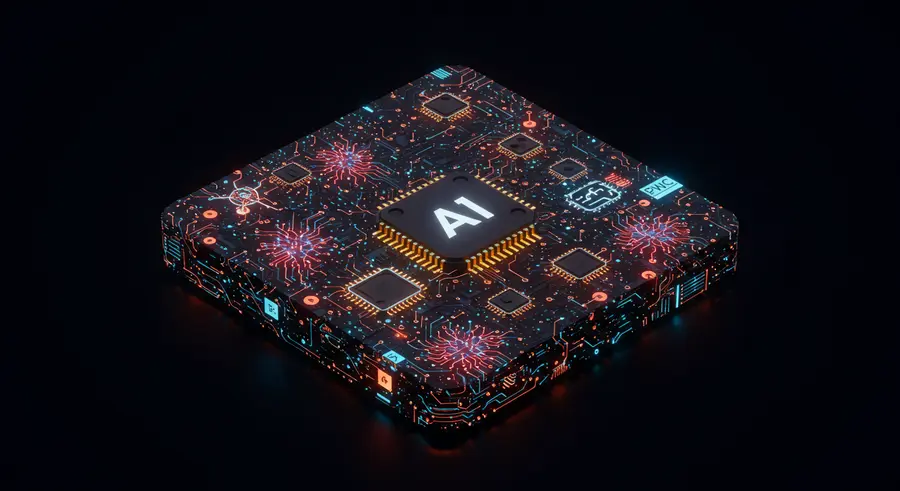Appearance

Welcome, fellow innovators and web enthusiasts! 👋 Today, we're embarking on an exciting exploration into the cutting-edge realm of Progressive Web Apps (PWAs), venturing beyond their current capabilities to envision a future where they are deeply intertwined with Artificial Intelligence (AI) and boast unparalleled access to device hardware. If you've been following the evolution of web technologies, you know PWAs have already revolutionized how we experience the web. But what's next? Get ready to dive deep into the intelligent future of PWAs!
The PWA Revolution: A Quick Recap 🚀
Before we leap into the future, let's briefly revisit why PWAs became such a game-changer. Progressive Web Apps offer a native-app-like experience directly from your web browser. They are:
- Reliable: Thanks to Service Workers, they can work offline or on low-quality networks.
- Fast: Cached assets and optimized loading ensure swift performance.
- Engaging: Push notifications and home screen installation keep users connected.
Many leading companies, including Pinterest, Spotify, and Trivago, have successfully adopted PWAs, showcasing their power to enhance user engagement and conversion rates. You can learn more about the foundational aspects of PWAs in our catalogue: https://techlinkhub.xyz/catalogue/web-development/the-power-of-progressive-web-apps-pwas
The Dawn of AI-Powered PWAs ✨
Imagine a PWA that doesn't just respond to your actions but anticipates your needs, personalizes content in real-time, and optimizes its performance based on your usage patterns. This isn't science fiction; it's the imminent reality of AI integration with PWAs.
AI can infuse PWAs with remarkable intelligence, enabling features like:
- Personalized User Experiences: AI algorithms can analyze user behavior to deliver highly relevant content, recommendations, and interfaces. Think of an e-commerce PWA that knows your preferences even before you search!
- Predictive Content Delivery: AI can predict what content a user might need next and pre-fetch it, leading to even faster loading times and a smoother experience.
- Intelligent Automation: From automating routine tasks within the PWA to providing smart chatbots for customer support, AI can significantly enhance operational efficiency.
- Enhanced Accessibility: AI-driven features like real-time language translation, voice interfaces, and intelligent content summarization can make PWAs more accessible to a broader audience.
These intelligent PWAs will leverage machine learning models, often running partially on the client-side (thanks to advancements in WebAssembly and browser APIs) and partially on the cloud, creating a seamless and powerful user experience.
Unleashing Advanced Hardware Access 📱
One of the traditional limitations of web applications compared to native apps has been restricted access to device hardware. However, this gap is rapidly closing! Modern web APIs are empowering PWAs with capabilities that were once exclusive to native applications. The future promises even deeper integration, blurring the lines between web and native.
Key areas of advanced hardware access for PWAs include:
- Biometric Authentication: Imagine securely logging into your PWA using facial recognition or fingerprint scanning, powered by WebAuthn API. This significantly enhances security and convenience.
- Augmented Reality (AR) and Virtual Reality (VR): With WebXR Device API, PWAs can offer immersive AR/VR experiences directly in the browser, opening up new possibilities for interactive product showcases, virtual tours, and educational content.
- Advanced Camera Controls: Beyond basic photo capture, PWAs will gain granular control over camera settings like pan, tilt, and zoom, enabling sophisticated image and video processing directly within the web environment.
- Access to Device Sensors: Deeper integration with sensors like accelerometers, gyroscopes, light sensors, and even specialized health sensors will allow PWAs to collect richer contextual data, leading to more intelligent and adaptive applications. Consider a fitness PWA that leverages precise motion tracking for exercise analysis.
- File System Access: The File System Access API allows PWAs to interact with the user's local files and folders more seamlessly, enabling functionalities like advanced document editing and offline media management.
- NFC and Bluetooth: Integration with Near Field Communication (NFC) and Bluetooth will unlock new possibilities for PWAs in areas like payments, device pairing, and IoT interactions.
These advancements are not just about adding features; they're about enabling PWAs to provide truly rich, context-aware, and highly functional experiences that were previously unimaginable for web applications.
The Synergy: AI + Advanced Hardware in PWAs 🌐
The true power emerges when AI and advanced hardware access converge within PWAs. This synergy creates a new generation of intelligent, highly capable web applications:
- Smart AR Experiences: An AR PWA could use AI to recognize objects in the real world (via camera access) and overlay intelligent information or interactive elements.
- Context-Aware Personalization: A PWA could leverage device sensor data (location, activity) combined with AI to offer hyper-personalized content or services based on the user's current context.
- Optimized Performance with Edge AI: Running AI models directly on the device (edge AI) via advanced hardware access can reduce latency and improve privacy, making PWAs even more responsive and secure.
- Enhanced Security: Biometric authentication and AI-driven anomaly detection can fortify PWA security, protecting user data and interactions.
The Road Ahead 🛣️
The future of PWAs is bright and brimming with potential. As browser capabilities expand and AI technology matures, we can expect PWAs to become even more pervasive, offering seamless, intelligent, and highly engaging experiences that rival or even surpass traditional native applications. Developers will have an increasingly powerful toolkit to build innovative web solutions that truly blur the lines between the web and native ecosystems.
Stay tuned, as the intelligent PWA revolution is just getting started! What exciting possibilities do you envision with AI-powered PWAs and advanced hardware access? Share your thoughts!